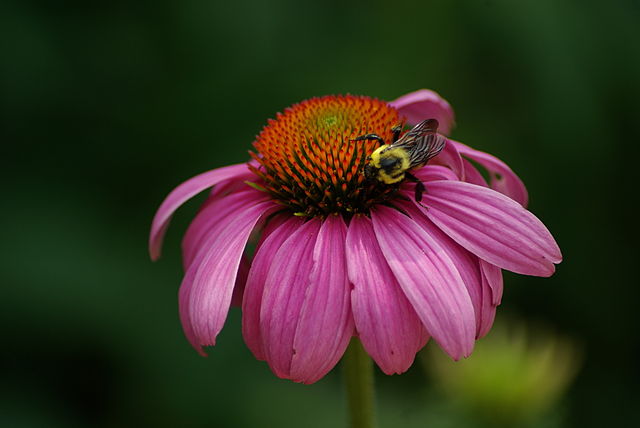
Source
Are you considering planting echinacea in your yard? Wondering about some of the benefits of echinacea and what it can do for your garden? Echinacea is a very popular plant, and there are many reasons why more and more people are growing it in zones 3-8. We explore why you should grow echinacea, as well as providing some tips on how to grow your own.
Why Should You Grow Echinacea?
It’s Native to The USA
A reason that is as good as any! Echinacea is actually native to the US, and this means it will grow in a lot of zones throughout the states relatively easily. Also, it means that by planting it, you are promoting the use and preservation of local American plants and herbs. It also means that echinacea is relatively abundant and easy to get your hands on.
Echinacea is Versatile
The echinacea family of flowers has a huge amount of different varieties, and there are more hybrids being created. Coneflowers are a common feature, but not all of the echinacea plants have these, some have discs that are filled with smaller ray flowers.
Shades that can be planted include yellow, purple, orange, red and more. Though some of the hybrid and rare colors can be harder to find, there truly are options for every yard.
Echinacea Attracts Pollinators
Gardening is often about creating an ecosystem. It isn’t just a case of throwing plants together and seeing what works; careful planning should be involved. Luckily, this plant encourages bees, butterflies and other pollinators to create a thriving yard as well as a beautiful look.
The Plant Is Known For Its Healing Properties
A lot of people looking for information on planting echinacea have heard about its healing properties. You may have bought remedies over the counter that include echinacea in their recipes. This isn’t an urban myth or made up tale to sell products, echinacea plants really do have healing properties.
It’s been used as an immunity booster and to help to treat colds or even flu, as well as other viruses. It promotes antimicrobial activity and also has anti-inflammatory properties. It can be used on rashes, bites and stings to soothe pain. It’s a great natural treatment for a number of ailments.
How To Grow Cone Flowers in Your Garden
Harvesting Seeds
If you know of a friend who has some echinacea, they will probably let you use their plants to harvest some seeds. People harvest seeds for a variety of reasons, not just to grow further plants, but to use them in ointments. This guide will show you how to harvest the seeds.
It can be quite a tricky process, and the main tip is to make sure the seeds are totally dry if you are going to need to store them. Otherwise, they will probably rot before it is time to plant them.
Prepare The Ground and Sow Seeds
Echinacea plants such as purple coneflowers are hardy, and able to grow in a variety of conditions. If you want to give the best chance for your seeds to grow, however, you should choose an area where there is plenty of sun. Soil with good drainage is also beneficial, and preparing the area by using compost is even better for the seeds, increasing their chances of germinating.
They should be sown outdoors at a time in the year when frost is still occurring in the mornings. They simply need to be sown ½ an inch deep. The seeds should only take a couple of weeks to germinate, so you’ll know if you’ve been successful.
Preventing Pests
Use an organic pesticide to prevent pests from ruining your crop. As echinacea plants tend to attract a lot of insects they can be a magnet for pests. This depends on the area in which you live, however. It doesn’t take too much effort to avoid pests, but it is worth doing. Plus, by going organic, you don’t have to risk chemicals in your yard!
Removing Spent Flowers
Once the time comes, you should get rid of spent flowers. This is sometimes known as “deadheading”. Because echinacea plants grow in all sorts of different environments, the dead heads can sometimes cause the plants to spread, and they can end up out of control.
As the seeds have multiple uses, you can harvest them when removing spent flowers and dry them ready for storage. You can also give them to friends and family to grow their own plants next season.
Conclusion
Have you enjoyed our post on why you should grow echinacea? Ready to grow your own at home?
Feel free to leave a comment and share the post with anyone you think might find it useful, and gardeners who might be keen to grow this native US plant.
